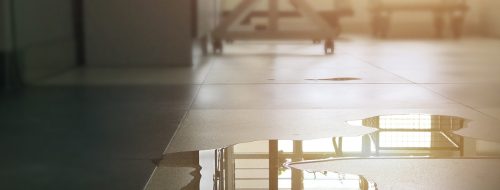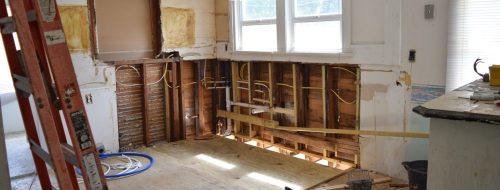Full-Service Hurricane Repairs in Marietta and the Greater Atlanta Area
The storm might be over, but the damage doesn’t stop when the winds die down. In the wake of a hurricane, it’s not uncommon to walk into a home that looks nothing like the one you left behind. Shingles are scattered across the yard. Windows are blown out. Water has crept into the walls, and your living room feels more like a swamp than a safe place to land. It’s overwhelming—and it all feels urgent.
At Big Bear Restoration, we know how critical those first steps are after a major storm. We help homeowners and businesses throughout the Greater Atlanta area recover quickly after hurricanes by tackling every layer of the damage.
That means boarding up exposed areas, clearing out floodwater, drying the structure, and making necessary repairs before small issues turn into something bigger. When it’s time to pick up the pieces, we’ll be there, ready to get your property back on track.
What Hurricane Damage Really Looks Like
Why Speed Matters After a Hurricane
Once the wind dies down and the skies clear, it’s tempting to take a breath and put off the next steps. But when it comes to hurricane damage, time is the one thing you can’t afford to waste. Moisture seeps deep, structural vulnerabilities grow more unstable, and the window for smooth insurance claims starts to shrink the longer you wait.
Our Most Asked Questions About Hurricane Damage Restoration
Hurricane damage isn’t limited to dramatic wind-blown debris or toppled trees. It includes a wide range of problems that can impact your home both immediately and long after the storm passes. If your roof is missing shingles, your windows have shattered, or your siding has been peeled away, those are clear indicators. But hurricane damage also includes less obvious issues—like water that’s crept behind drywall, wind-driven rain that’s soaked the attic, or cracks in the foundation caused by ground saturation.
The key is understanding that hurricane damage doesn’t always look catastrophic. Even smaller signs like warped flooring or bubbling paint can signal something bigger beneath the surface. At Big Bear Restoration, we assess every inch of your property to identify both the visible and hidden damage, so nothing is left to chance.
The safest approach is to bring in a licensed restoration team for a full inspection before reentering or making any repairs. Hurricanes can cause roof shifts, compromised load-bearing walls, or weakened foundations—even in homes that look intact on the outside. Sometimes the structural issues don’t show up right away, especially if they’re hidden behind drywall or beneath floors.
Look for warning signs like doors that won’t close properly, sagging ceilings, cracks in the walls, or floors that suddenly feel uneven. These red flags point to potential structural instability. Our team at Big Bear Restoration knows what to look for after a hurricane, and we use tools like thermal cameras and moisture meters to detect internal damage that may not be visible yet.
In many cases, yes—especially if your policy includes wind and storm coverage. Most standard homeowners’ insurance plans will cover structural damage caused by high winds, falling trees, and flying debris. They may also cover the cost of emergency tarping, window boarding, and water damage mitigation. Some policies even help with temporary housing and replacement of personal items.
However, things get trickier with flood damage. Many homeowners are surprised to learn that storm flooding is usually not included under basic homeowners’ insurance and must be covered by a separate flood policy.
That’s why it’s so important to review your policy carefully. When you work with Big Bear Restoration, we don’t just repair the damage—we also work directly with your insurance adjuster to make the claims process easier and more accurate.
Most likely, yes. Anytime water sits for longer than 24–48 hours—especially in a humid environment like Georgia—mold starts to take root. And the kind of moisture left behind by a hurricane doesn’t just sit on the surface. It seeps into insulation, hides behind drywall, and lingers in crawl spaces, creating the perfect environment for mold to thrive.
Even if you’ve dried things out with fans or removed soaked items, there’s a good chance that residual moisture is still hiding in the structure of your home. Our mold remediation team can assess the situation using thermal imaging and moisture detection tools, then remove contaminated materials and treat affected areas. It’s not just about removing visible mold—it’s about stopping it from coming back.
Putting off storm repairs might seem like a way to save time or money, but it usually leads to the opposite. Here’s what can happen when cleanup takes a backseat:
- Leaks get worse: Even small roof or siding damage can let in more water during the next storm.
- Mold takes hold: Moisture trapped behind walls or under floors creates the perfect breeding ground for mold.
- Structural damage spreads: Cracked walls, weakened framing, or compromised foundations can worsen with every day that passes.
- Insurance claims get harder: Most policies require homeowners to prevent additional damage. Waiting too long could reduce your payout or cause parts of your claim to be denied.
- Restoration costs go up: What could have been a small repair may turn into a major rebuild if the damage spreads or worsens.
The bottom line? Quick action after a hurricane helps protect your home, your health, and your wallet. Big Bear Restoration is here to move fast when it matters most.
Clean, Grey, or Black? The Three Kinds of Water Damage Explained
When water enters your home or business unexpectedly, it’s easy to see only the mess…
How a Single Company Simplifies Restoration and Reconstruction
When disaster strikes, like a burst pipe flooding your living room, a fire leaving smoke…

